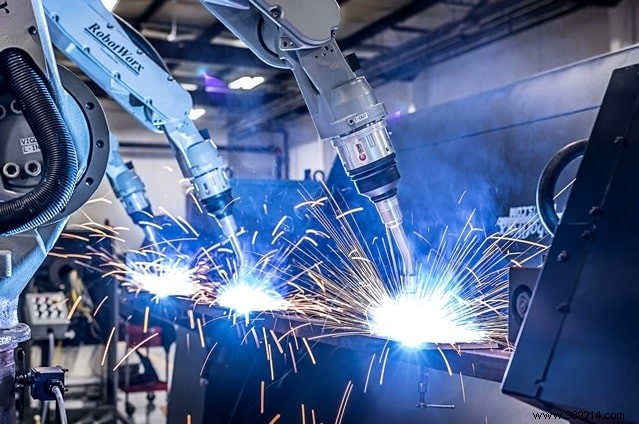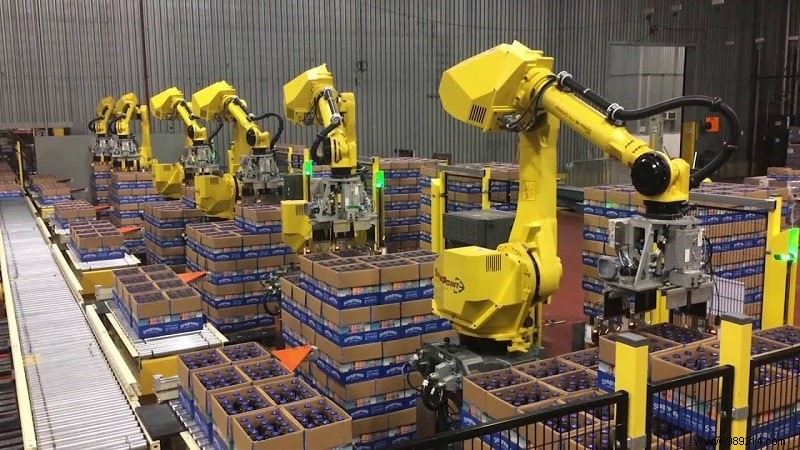Because they can be programmed to perform dangerous, complicated, and/or repetitive tasks with consistent precision and accuracy, industrial robots are increasingly being used in a variety of industries and applications. They are available in a wide range of models, the reach, payload capacity and number of axes of movement (up to six) of their articulated arm being the most common distinguishing features. The set of machines used in the automation of tasks forms industrial robotics.
In production and material handling applications, a robot uses an end effector or an end-of-arm tooling attachment (EOAT) to hold and manipulate either the tool performing the process or the part on which a process is performed. The robot's actions are directed by a combination of programming software and commands.
Their automated functionality allows them to operate 24/7, as well as with hazardous materials and in harsh environments, freeing up personnel to perform other tasks. Robotic technology also increases productivity and profitability while eliminating labor-intensive activities that could cause physical strain or potential injury to workers. Manufacturing by industrial robotics has therefore also been perfected, as shown by this manufacturer of special machines based in Lyon.

Industrial robots are used in a variety of applications. They are able to handle products as diverse as car doors or eggs. They are fast and powerful as well as skilful and sensitive. Applications include pick and place from conveyor line to packaging, and machine maintenance, where raw materials are fed by robot into process equipment such as injection molding machines, grinders CNC, lathes and presses.
Industrial robots load corrugated boxes or other packaged items onto a pallet according to a defined pattern. Robotic palletizers rely on a fixed position or overhead gantry robot with special tooling that interfaces with the individual load components, creating simple to complex layer patterns on top of a pallet that maximize the stability of the load during transport. There are three main types of palletizing:forming in line or in layers, depalletizing or unloading and mixed box.
Due to their dangerous nature, laser, plasma and water jet cutters are frequently used with robots. Hundreds of different cutting paths can be programmed into the robot, which produces precision and precise path following with greater flexibility than most dedicated cutting machines.

Multi-axis robots can grind, cut, hone, polish and clean almost any part made from any material for a consistent quality finish. To apply sealant or glue, a robot follows a precise trajectory with good speed control while maintaining an even bead of the adhesive substrate. Robots are frequently used for sealing applications in the automotive industry to seal windows, as well as in packaging processes for automated sealing of product corrugated boxes.
Due to the volatile and hazardous nature of solvent-based paints and coatings, robots are used in spray applications to minimize human contact. Painting robots usually have slender arms because they don't carry much weight, but need maximum access and fluidity of movement to mimic a human's application technique. Used for both bead welding (MIG, TIG, arc and laser) and spot welding, the robots produce precise welds, as well as controlling parameters such as power, wire feed and flow rate. gas.